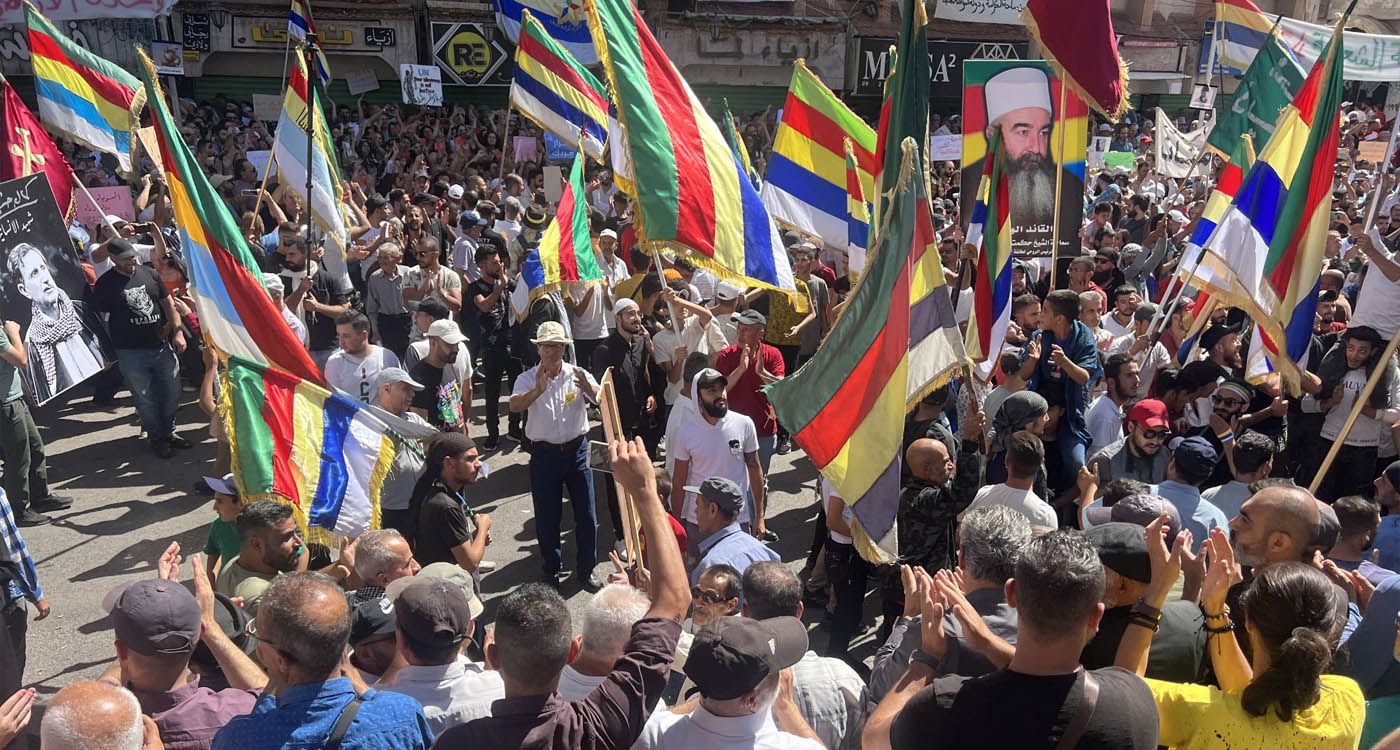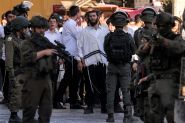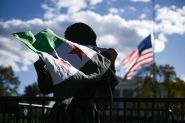- Home
- Middle East
- The Druze of Syria: A Minority Seeking Stability in the Post-Assad Transition

©Sam Hariri / AFP
Since July 13, deadly clashes in Syria’s southern province of Sweida have left more than 1,300 people dead, including at least 630 local residents, according to the Syrian Observatory for Human Rights. The violence erupted after the abduction of a merchant from the Druze community, triggering a wave of bloodshed that underscores the region’s deepening instability.
This incident triggered several days of fierce fighting between Druze militias and Sunni Bedouin fighters, adding to tensions from earlier confrontations in April and May between armed Druze factions and Syrian security forces, which had already claimed dozens of lives.
In this volatile and rapidly evolving context, understanding the internal dynamics of the Druze community, its structure, historical choices, and aspirations has become essential. Once perceived as peripheral, the Druze now find themselves at the center of several major challenges confronting Syria’s transition, following the rise to power of President Ahmad al-Sharaa in January 2025.
A Well-Established, Transnational, and Anxious Minority
An esoteric offshoot of Ismaili Shiism dating back to the 11th century, the Druze faith is a closed religion in which membership is inherited by birth. “Theoretically, conversion is not possible: one is born Druze, one doesn’t become Druze, somewhat like Judaism, all things considered. Marriages remain within the community,” explains David Rigoulet-Roze, a researcher at the French Institute for Strategic Analysis (IFAS) and editor-in-chief of Orients Stratégiques.
Spiritually led by a council of initiated sages, the Druze community is supported by a deeply structured internal network of solidarity.
In Syria, the Druze number between 650,000 and 700,000, primarily concentrated in the governorate of Sweida, on the slopes of Jabal al-Druze. They represent roughly 3 to 4 percent of the Syrian population. According to Rigoulet-Roze, “The Druze form a transnational community of around one million people, spread across Syria, Lebanon (about 300,000, mainly in the Chouf), Israel (130,000), the Golan Heights (20,000), and, to a lesser extent, Jordan (around 20,000).”
He adds that, like many other Middle Eastern minorities, the Druze “live in constant fear of discrimination or even sectarian massacres.” Recent events in Syria have only reignited these deep-rooted fears.
Because of their distinct religious doctrine, the Druze are often regarded, at best, as heterodox Muslims by Sunni communities and, at worst, as outright heretics by jihadist groups, the expert tells This is Beirut.
A Complex Relationship with the Central Power
Historically, the relationship between the Druze and the Syrian central government has always been marked by ambivalence. Under the Alawite-led Baathist regime, a degree of autonomy was tolerated in exchange for a benevolent neutrality. “The regime sought to avoid the Druze becoming a hostile faction in the civil war opposing Bashar al-Assad to the Sunni insurgents,” explains Mr. Rigoulet-Roze, “even if it meant granting them a de facto relative independence in the Jabal al-Druze and the Sweida region.”
As a result, some Druze integrated into state structures, notably the army or the administration, but always in secondary positions. This balancing act allowed the community to preserve its identity without directly confronting the regime - a survival strategy rather than one of ideological support.
When the Syrian revolution broke out in 2011, the Druze mostly adopted a stance of neutrality, with leading figures in the community reluctant to join an opposition whose Sunni tone concerned them. The Jabal quickly became a refuge: neither fully pro-regime nor clearly insurgent. It was during this time that local self-defense armed groups emerged, more concerned with communal security than with the fate of Damascus.
This ambivalence largely spared Sweida from the massive destruction that hit other regions, although it left the community politically isolated.
Only after 2015 did the situation begin to shift. The regime, weakened militarily, reduced its presence in the south. Sweida was then left to its own devices, prey to militias, traffickers, and the growing influence of mafia groups often tied to intelligence services. The 2018 abduction of dozens of Druze women by ISIS and the massacre of over 250 civilians during an Islamic State raid deeply scarred the community, reigniting a sense of abandonment.
Later, in 2023, large-scale protests against poverty and repression marked a break from the former tacit loyalty. In August 2023, thousands of demonstrators began marching daily to denounce corruption, poverty, and the authoritarianism of Bashar al-Assad’s regime - abandoning the cautious neutrality maintained since the start of the Syrian conflict.
By 2025, with Ahmad al-Sharaa’s rise to power, a new era appears to be taking shape. Several Druze factions, such as the Harakat Rijal al-Karama (Movement of the Men of Dignity) and the Druze Mountain Brigade, have proposed participating in a restructured national army - on the condition that they retain control over local security in Sweida.
However, according to Mr. Rigoulet-Roze, recent violence has reshuffled the deck: “A hardline faction, led by Sheikh Abu Salman Hikmat al-Hijri, is now asserting itself. It is based on the belief that no trust can be placed in a new government born from an Islamist matrix, accused of allowing terrorist groups to operate, which, according to Sheikh al-Hijri, are carrying out ‘a genocidal campaign.’”
Opposed by two more moderate religious leaders, Al-Hijri has declared himself the supreme spiritual leader, solidifying his position in a context where the notion of an “existential threat” is being actively mobilized.
Caught Between Identity and Autonomy
While some observers worry that calls for Druze autonomy could serve broader agendas of Syrian fragmentation - championed by Israeli or Western actors - others within the community argue that some form of decentralization is vital for their survival. “A portion of the Druze reject any dismantling of the Syrian state,” explains David Rigoulet-Roze, “yet they still demand tangible guarantees for the recognition of their identity.”
In an effort to defuse tensions, the transitional government on Monday ordered the evacuation of Bedouin groups from Sweida and deployed special units from the Interior Ministry. At the same time, it quietly allowed Druze notables to oversee local security - a tacit acknowledgment of their authority.
Today, the Druze of Syria navigate a complex path between identity-driven resistance, political caution, and a longing for recognition. Their military influence may be limited, but their symbolic and moral weight is considerable. Their pressing challenge: to turn their historical isolation into a source of influence in a nation still finding its shape.
Read more




Comments